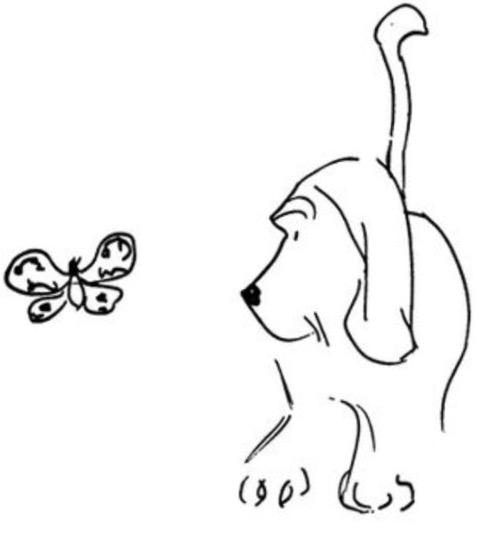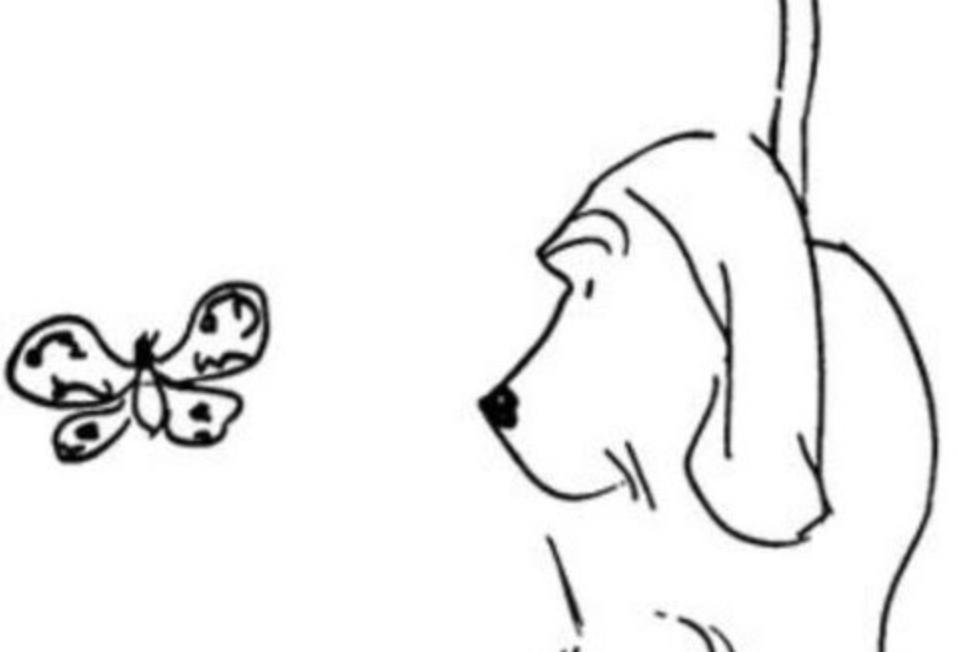I found this little drawing many years ago at a yard sale. I had no idea of its provenance, but ever the optimist, I bought it for a dollar or two, convinced it was an undiscovered masterpiece by James Thurber that would keep me in high cotton once I hit retirement. Well, that day has long since come and gone, and now the sketch hangs over the crib where the last grandchild naps when she comes to visit. It’s worth a lot more to me for that duty than for any value I presumed it had when I purchased it for such a song way back when.
 Value is like that. It’s not so much about actual worth as about personal meaning. Many possessions might be valuable, but only a few have any real meaning because value is ascribed by others while meaning is self-determined.
Value is like that. It’s not so much about actual worth as about personal meaning. Many possessions might be valuable, but only a few have any real meaning because value is ascribed by others while meaning is self-determined.
My “Thurber” is just a simple sketch, whimsical and playful, and I like to think that it has brought sweet dreams to all those who have slept beneath it. I’m sure those babies never once thought about the drawing’s value—if, indeed, it has any at all—but I know one or two have pointed to it upon waking and delightedly said “Dog” or “Birdie,” “butterfly” being well beyond the horizon of a sleepy crib monkey’s vocabulary. Maybe in years to come, one of those monkeys will even remember sleeping under my presumed masterpiece the way I remember the little lamp that sat on the dresser in my childhood bedroom and played “Teddy Bear’s Picnic” over and over until I finally fell asleep. Plenty of meaning, but precious little value.
I’m of the opinion that an item may be valuable to us—even invaluable to us—not because we list it on a rider to an insurance policy, but because of the place it holds in our memory and on the register of our lives. Sure, some things can become more valuable over time, but remember, markets are like elevators: they can go up and down. Meaning is different because external factors don’t really matter; meaning is found, not made. It’s personal, not something subject to the influence of someone else’s perspective or events beyond our control.
My daughter was with me the day I found this sketch at that yard sale. She was in high school at the time. Now she is an accomplished artist, living and making her own masterpieces a continent away. Maybe that’s another reason I ascribe such meaning to this little doodle: it brings back memories of a time when a dog and a butterfly got along like two peas in a pod.
As to the value of my “Thurber,” I’ve never bothered to look into its artistic provenance. It’s probably just an offset print, one of thousands, matted and framed. I really don’t care if it’s authentic or not. To be honest, it’s its story that appeals to me. I’m infinitely more persuaded by the emotional provenance of this perfect little sketch: “Dog and Butterfly” means something important to me and, even more importantly, to those babies in the next generation who have slumbered beneath it. That’s both its true value and meaning, isn’t it?
I’ll be right back.
Jamie Kirkpatrick is a writer and photographer who lives in Chestertown. His work has appeared in the Washington Post, the Baltimore Sun, the Philadelphia Inquirer, the Pittsburgh Post-Gazette, the Washington College Alumni Magazine, and American Cowboy Magazine.
Two collections of his essays (“Musing Right Along” and “I’ll Be Right Back”) are available on Amazon. Jamie’s website is www.musingjamie.com



Briggs says
All good thoughts, Jamie. And for Ann & Nancy Wilson (of Heart fame), it had a different value. From the Wikipedia page: “Dog & Butterfly” is a song recorded by the rock band Heart. It is the title track to the band’s fourth studio album Dog & Butterfly and was released as the album’s second single. The song is a more subdued effort from the band, differing from past hard rock-oriented hits, as Ann and Nancy Wilson pulled from their folk music influences. The song charted moderately in the US in 1979, peaking at #34 on the Billboard Hot 100.
Ann has said she was inspired when she looked out a window and saw a dog relentlessly chasing a butterfly. She saw the song as an inspiration when things get tough to “keep going after it.”